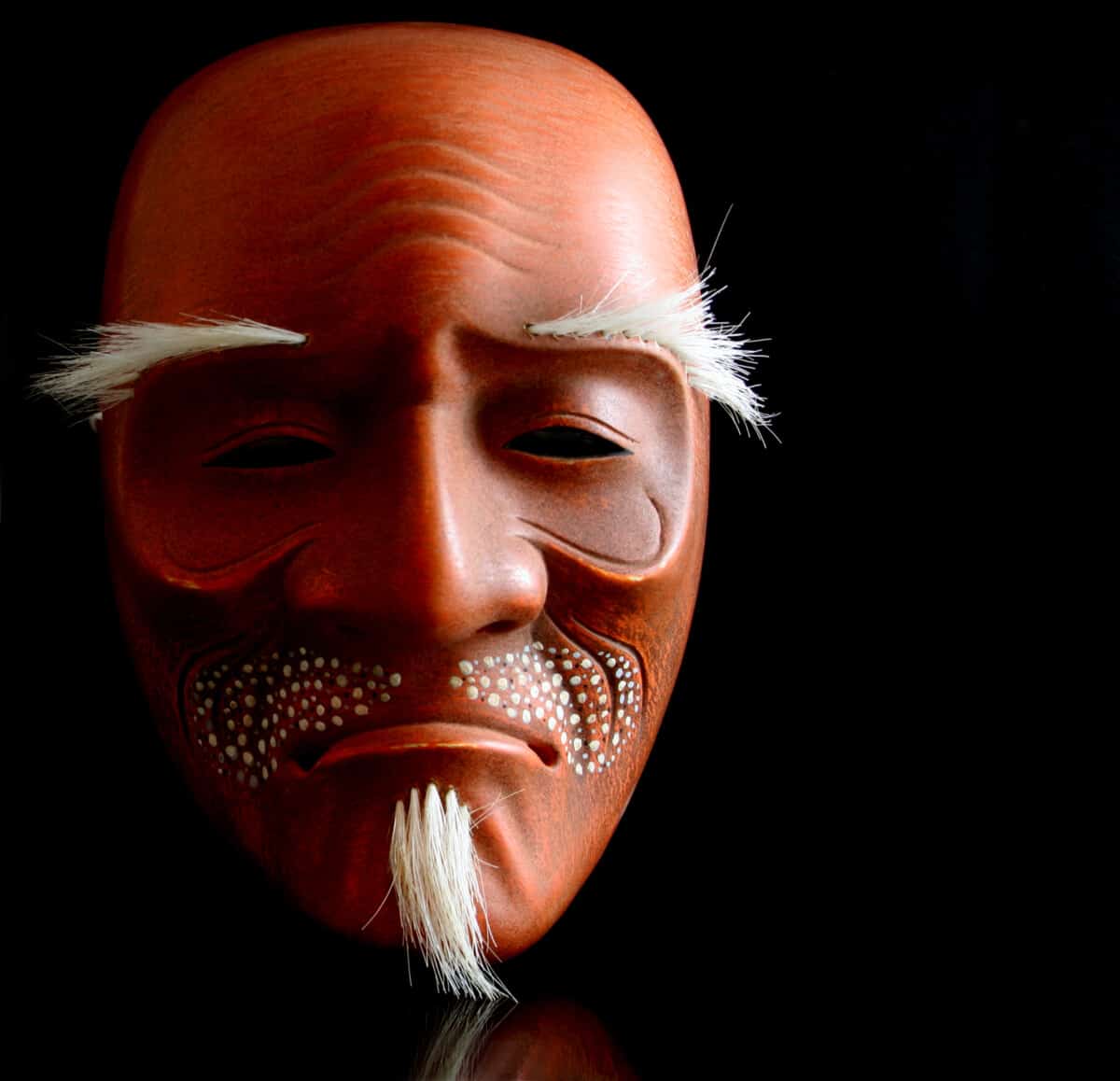Noh a style of classical Japanese dance, music, and drama performed since the 14th century, is derived from the Japanese word for “skill” or “talent.” It is the oldest significant theatre art that is being routinely performed today, having been created by Kan’ami and his son Zeami.
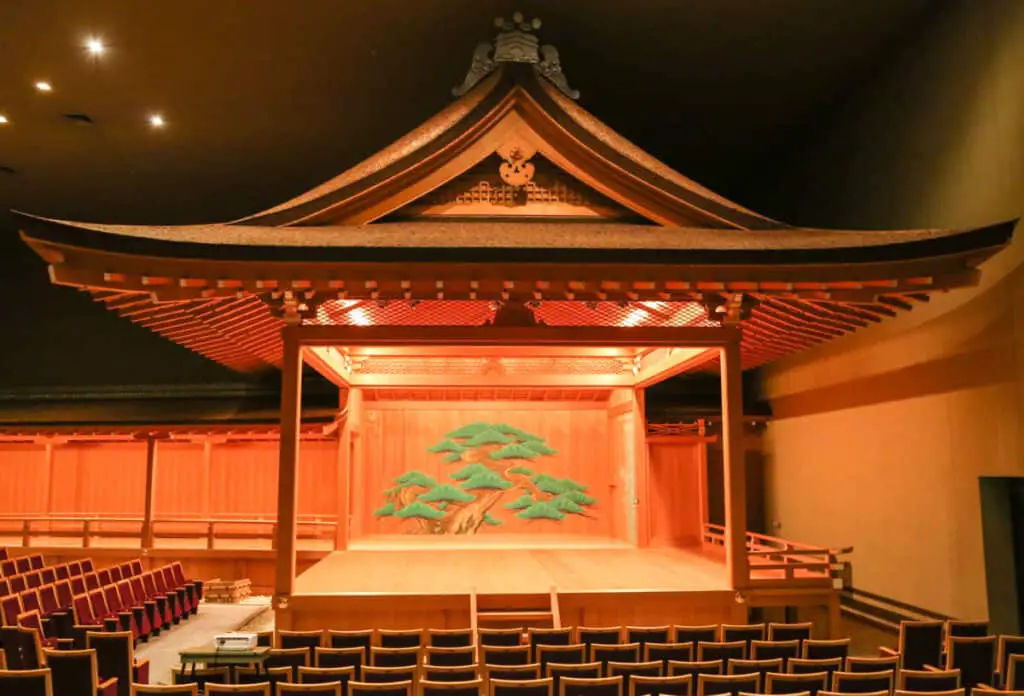
Noh is frequently based on Japanese literary tales with a supernatural entity turned into a human shape as a hero recounting a story. Noh is a dance-based performance that incorporates masks, costumes, and different props, requiring highly skilled performers and musicians.
The famous masks symbolize characters such as ghosts, ladies, deities, and devils, while exaggerated movements are used to communicate emotions.
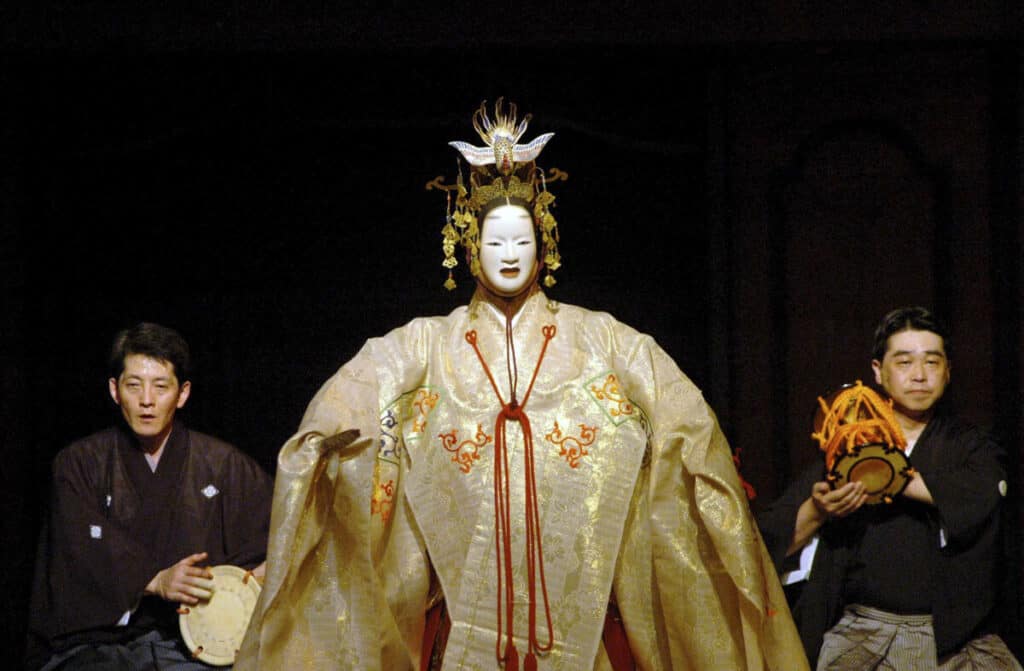
The loss of financial assistance from the government came with the collapse of the Tokugawa shogunate in 1868 and the creation of a newly modernized government, and the entire field of Noh suffered a significant financial crisis.
The whole number of Noh artists and the number of Noh stages drastically decreased following the Meiji Restoration. The imperial government’s backing was eventually regained, thanks in part to Noh’s appeal to foreign ambassadors.
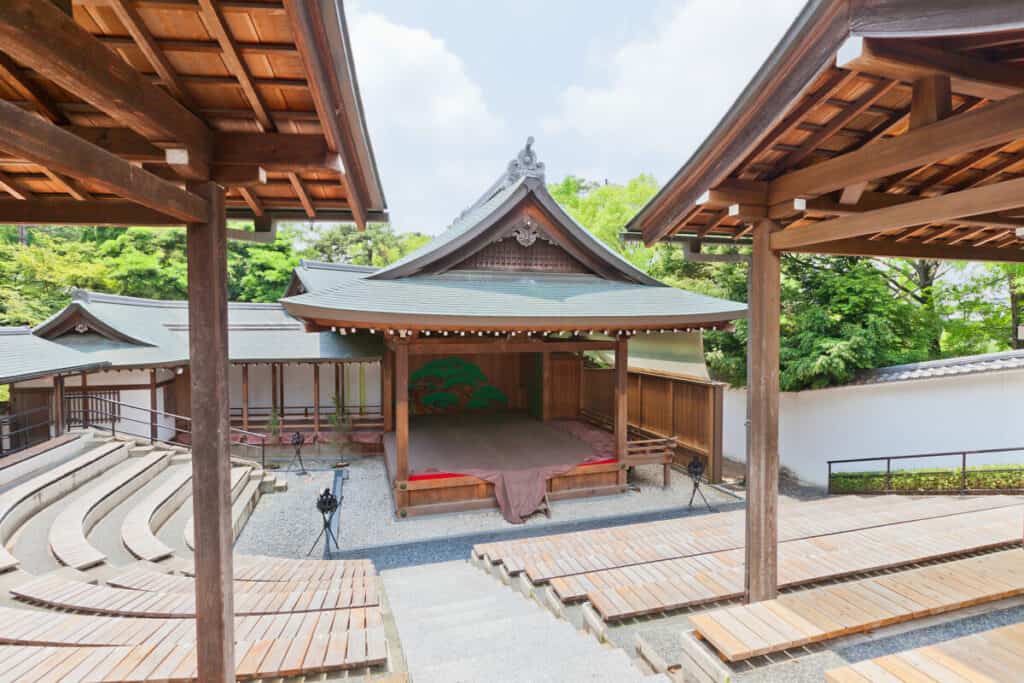
The groups that stayed operating during the Meiji era substantially extended Noh’s appeal by playing for the general public in major cities like Tokyo and Osaka.
The government established the National Noh Theatre in 1983 to conduct regular performances and to provide courses to train performers in the principal roles of nogaku. UNESCO included Noh theatre on the List Of recommendations of the Intangible Cultural Heritage of Humanity in 2008.
The Performance Elements Of Noh Theatre
Noh Mask
Noh masks are carved from “hinoki” (Japanese cypress) blocks and painted with natural pigments over a neutral foundation of glue and crushed seashell. There are roughly 450 different masks, most of which are based on sixty various kinds, each with its own unique name.
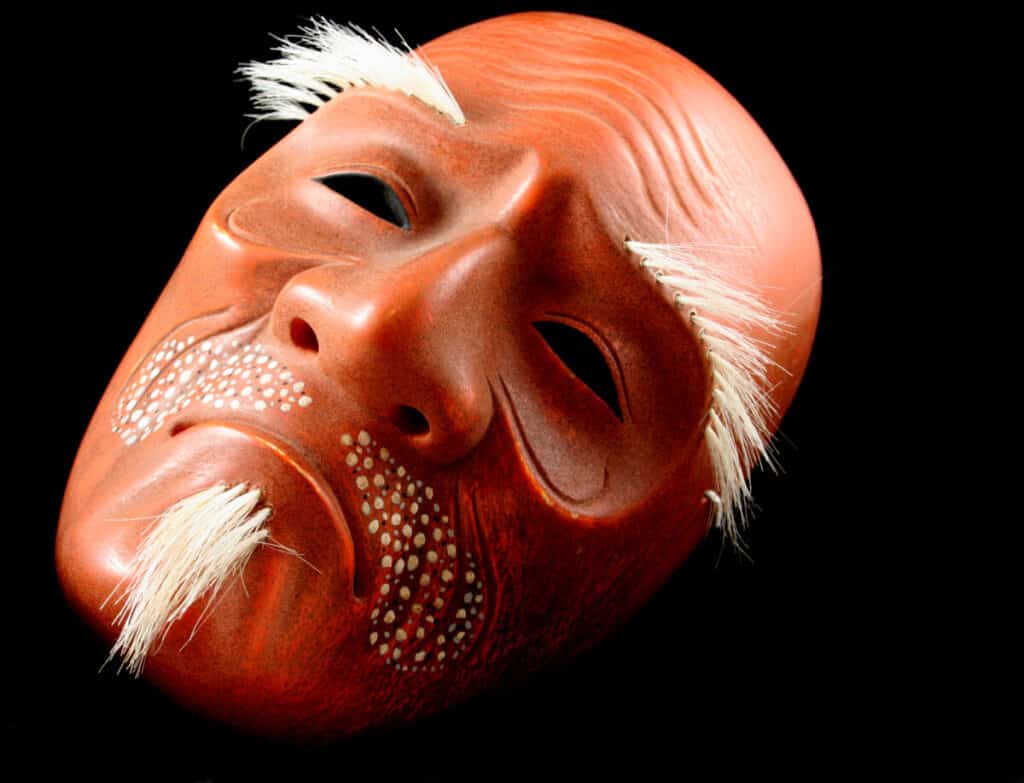
Some masks are typical and appear in a variety of plays, while others are highly unique and appear in only one or two. Noh masks represent the characters’ gender, age, and social status, and performers can dress up as children, elderly men, women, or otherworldly (divine, demonic, or creature) figures by donning masks.
In most plays, only the shite, the main character, wears a mask, however, the tsure may wear one to portray female roles.
The Stage
The Noh platform (butai) is completely open, allowing the artists and audience to enjoy a shared experience throughout the performance. The audience can see each performer even before they arrive (and after they depart) the center “stage” since there are no curtains to block their vision (honbutai, “main stage”).
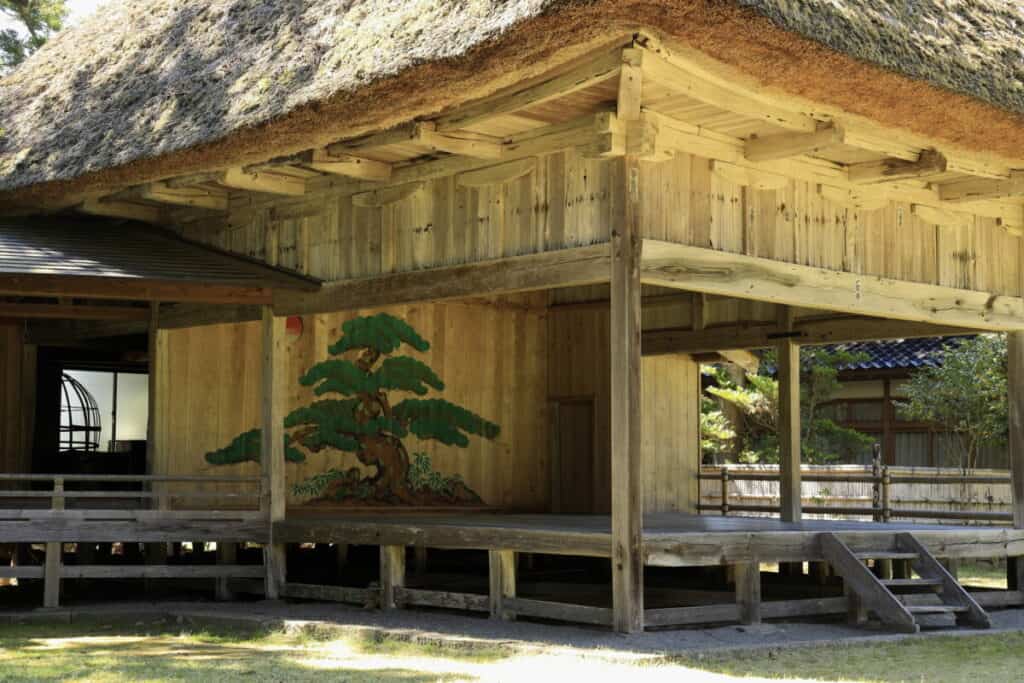
The theatre is respected by both the artists and the audience since it is considered symbolic of shrines.
The independent roof that extends over the stage, even in indoor theatres, is among the most recognized features of the Noh stage.
With its built form inspired by Shinto shrines’ worship pavilion (haiden) or spiritual dancing pavilion (kagura-den), the roof represents the purity of the stage, supported by four columns. The stage is also defined as an aesthetic entity by the roof, which unites the theatre area.
Costumes
Noh performers use shozoku (robes) made of silk, as well as wigs, headgear, and accessories like the Japanese fan. Noh robes are remarkable pieces of art in their own right, with vibrant colors, complex texture, and intricate weaving and embroidery.
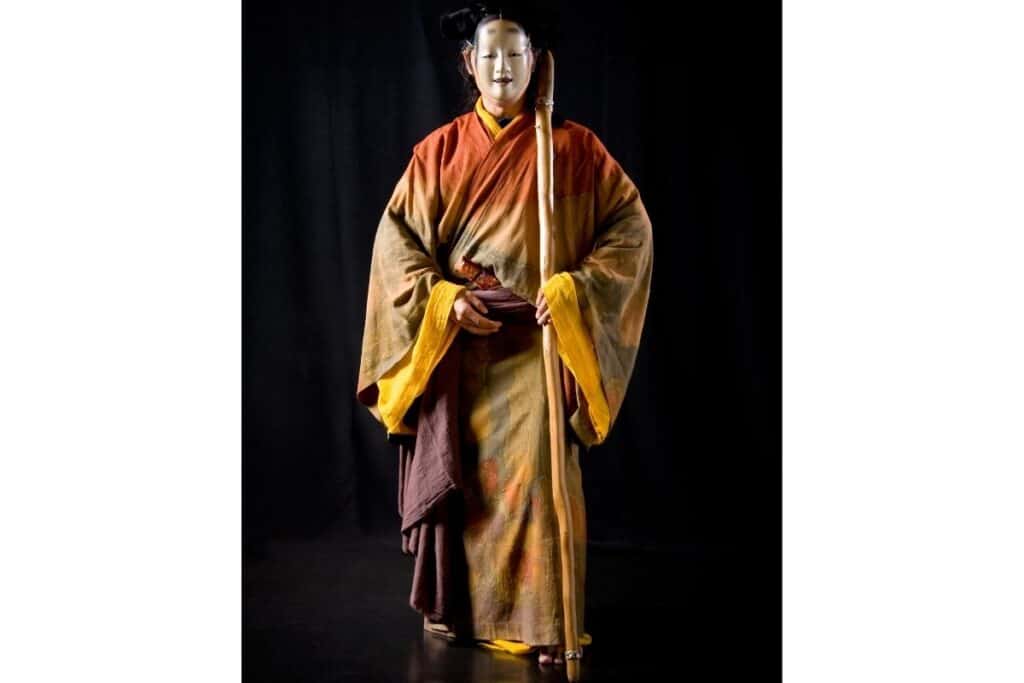
The shite’s costumes are particularly lavish, with dazzling silk embroideries, whereas the tsure, wakizure, and aikygen’s costumes are less elaborate.
Props
In Noh, props are used in a simple and stylised manner. The fan is the most frequent prop in Noh, as it is held by all actors, regardless of function. Choir singers and musicians can take the stage with their fan in hand or tucked into their obi (the sash).
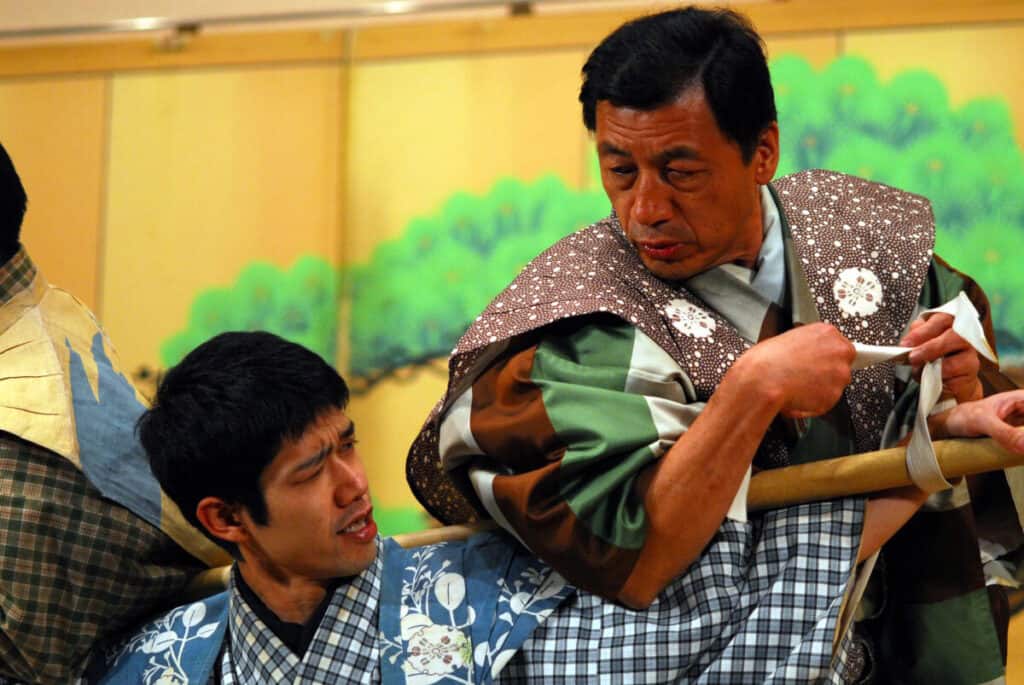
When the performer takes his or her position, the fan is generally put by the artist’s side and isn’t taken up again until the performance exits the stage. The fan is commonly employed to symbolize any or all hand-held props, such as a weapon, wine jug, flute, or calligraphy brush, during dance sequences.
Over the course of a single play, the fan may symbolize a variety of items.
When other than fans are used as hand props, they are generally presented or retrieved by kuroko, who are akin to stagehands in modern theatre. Stage attendants for Noh, like their Foreign counterparts, wear black, but unlike in Foreign theatre, they may emerge on stage during a scene or remain on stage throughout the play, in both cases in full view of the audience.
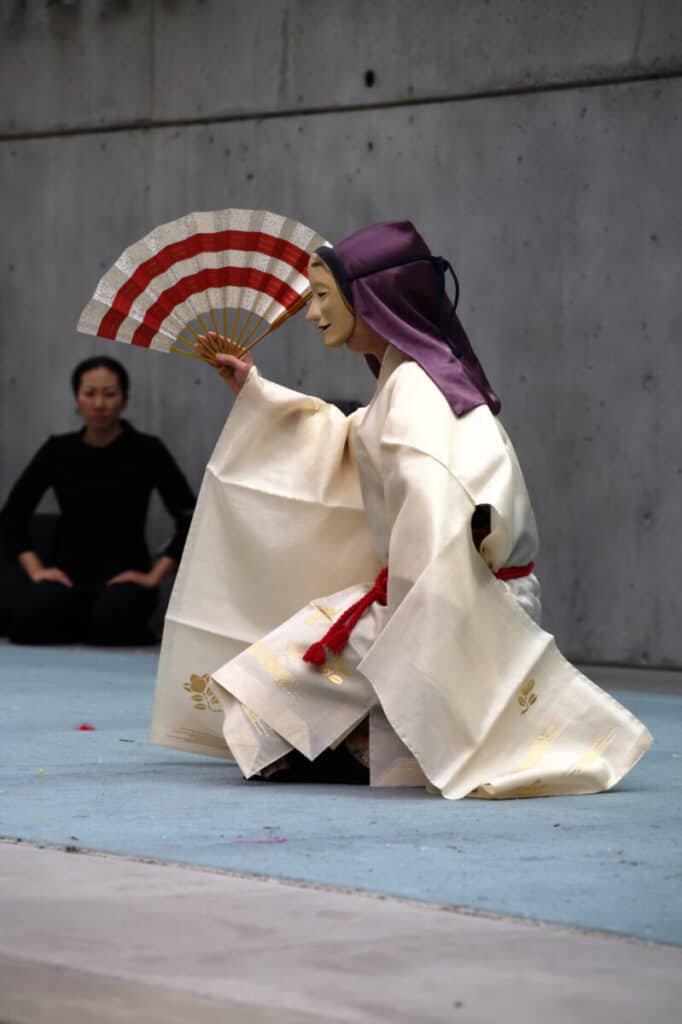
Kuroko’s all-black outfit suggests that they aren’t involved in the activity on stage and are nearly invisible.
Set pieces in Noh, such as boats, wells, altars, and bells, are usually carried onto the stage just before act in which they are required.
Although the big bell, a recurring exception to most Noh props, is meant to conceal the performer and allow a wardrobe change during the kygen intermission, these props are usually merely outlines to simulate genuine items.
Chants and music
A choir and a Hayashi ensemble perform with Noh theatre. Noh is a chanted play that has been termed “Japanese opera” by certain critics. The singing in Noh, on the other hand, has a limited tonal range, with long, repeated periods in a limited dynamic range.
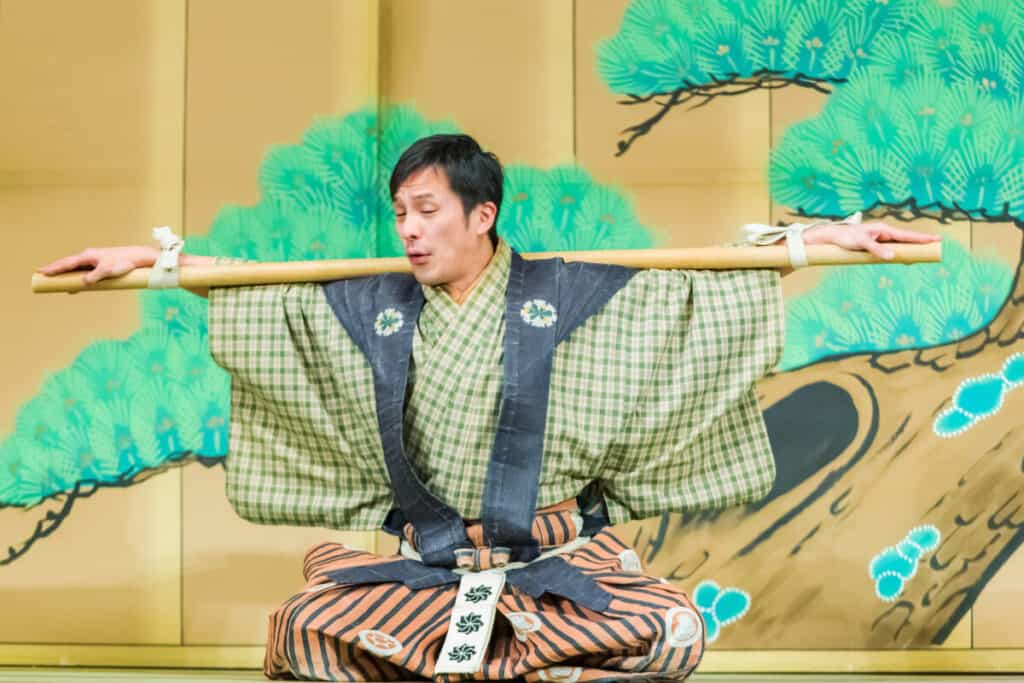
The texts are lyrical, with an economy of phrase and a wealth of allusion, depending largely on the Japanese seven-five rhythm prevalent to virtually all forms of Japanese poetry.
“Utai” refers to the singing sections of Noh, whereas “Kataru” refers to the speaking parts. Many blank spaces (ma) exist between the actual sounds in the music, and these empty void spaces are really regarded as the song’s heart.
In addition to utai, the Noh hayashi ensemble includes four musicians, known as the “hayashi-kata,” who play the shime-daiko, tsuzumi (hip drum), and kotsuzumi (shoulder drum) respectively, as well as a nohkan flute.
The Plays
About 240 plays from the nearly 2000 Noh plays known today make up the current catalog presented by that of the five existing Noh schools.
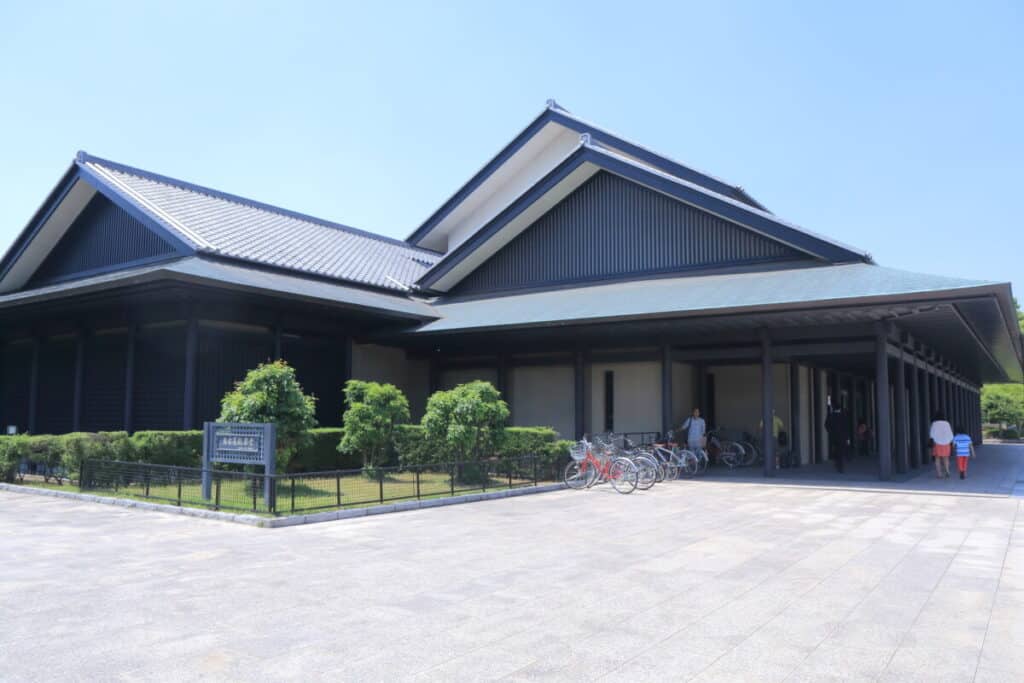
The present catalog is largely affected by the tastes of the Tokugawa aristocracy and may not often reflect popular opinion among common people. Noh plays can be classified in a variety of ways.

